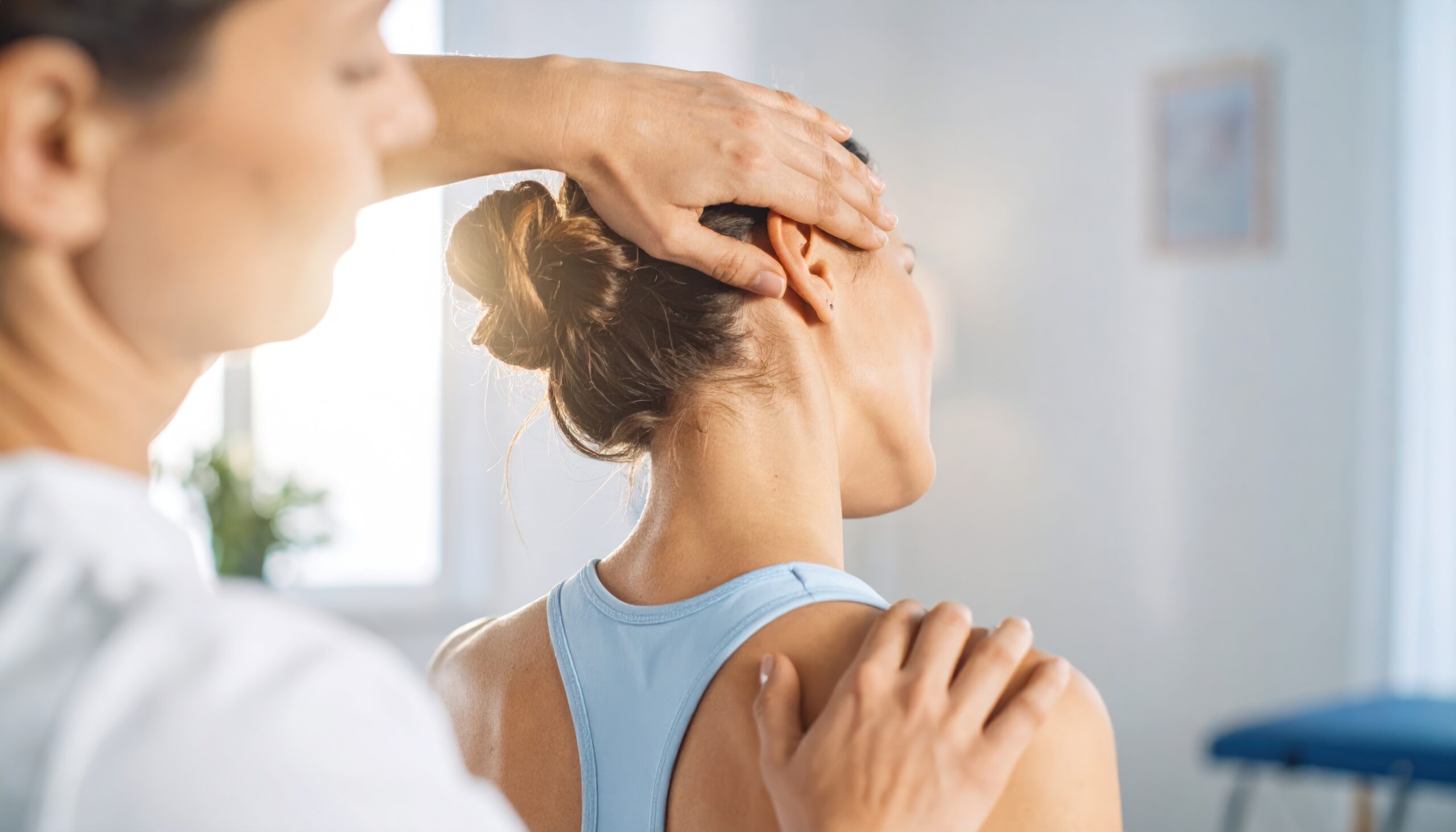By now, you’ve likely heard the phrase “sitting is the new smoking.” This provocative warning sent chills through the spines of the millions of Americans who spend hours every day at a desk, commuting, or on the couch. While it is not quite as dangerous to your health as smoking, spending too much time sitting does increases the risk of obesity, type 2 diabetes, depression, certain cancers, and cardiovascular disease. Sure, a sedentary lifestyle leads to these bad health outcomes, but what does prolonged sitting do to your the lower back? And if sitting is bad, are standing desks good for your back?
Are Standing Desks Good For You?
Standing desks can be good for you—if they get you up and moving rather than sitting at a desk all day. Remember, it is the sedentary lifestyle associated with sitting that is dangerous. Standing desks can be good for you if they keep you from looking down at your desk work or a low monitor. The weight of the tilted head puts tremendous strain on the neck. The greater the degree of tilt, the greater the strain. The same benefit may be gained from using a monitor stand and an angled document/book riser.
The Advantages and Disadvantages of Standing Desks
Let’s take a closer look at the advantages and disadvantages of standing desks.
Advantages Of Standing Desk
The following are potential disadvantages of sitting for long periods of time:
- Reduced pressure on the lower back/lumbar spine
- Reduced strain on the neck/cervical spine (if it decreases neck bending)
- Decreases the amount of time spent sedentary
- May improve mood and aid in productivity
Disadvantages Of Standing Desk
The following are potential disadvantages of standing for long periods of time:
- Increased risk of deep vein thrombosis (DVT)
- Increased risk of varicose veins
- Possible increased low back pain
- Foot pain
- Leg pain
- Edema (swelling) in the lower legs
Benefits Of Standing Desks
- Standing burns slightly more calories than sitting (but not much). On average, people burn about 80 calories an hour by just sitting and 88 calories an hour by standing. Are you burning more calories? Yes. Is the number of calories likely to matter for most Americans? No.
- Increased productivity. People with desk jobs tend to be more productive if they stand during work rather than sit.
- Less neck and shoulder pain. People who moved to standing desks reported significantly less neck and shoulder pain than those who continued to sit. This may be due to the height of the monitor. Workers did not bend their necks as much while standing.
- Less back pain disability. People with chronic lower back pain who used standing desks had better Oswestry Disability Index (ODI) scores than those who sat at their desks. The ODI assesses pain intensity but also how back pain affects the patient’s life. Interestingly, pure low back pain scores were not improved by using a standing desk.
Tips For Using A Standing Desk Properly
If you decide to switch to a standing desk, consider these helpful tips to protect the neck, lower back, legs, and feet.
Adjust your desk to the optimal height
Your desk should be adjusted to a height in which your hands can rest on the desk with your elbows at a 90-degree angle, i.e., neutral position. While this is the ideal height for your arms, it is not the right height for your neck. Remember that neck pain at work is often brought on by looking down, so use monitor stands to elevate your computer monitor so that you see the center of your screen when your head is in a neutral position, i.e., looking straight ahead.
Improve your posture
When we are working, we’re not thinking about our posture. We only start thinking about our posture when we get neck or back discomfort and need to change positions. But if you practice keeping a good posture at the start of and throughout your day, you can reduce strain and discomfort. Ideally, keep your head, neck, and spine in a straight line. Slouching or hunching over may seem most comfortable, but they are not good for the spine. If you need a little help remembering not to slouch, try a posture tracker like the Upright Go S™.
Do not try to stand the entire day, especially at first
Years of ergonomic study have taught us that standing for eight hours a day can be just as challenging as sitting for eight hours a day, if not more. Don’t believe it? Talk to a factory worker on an assembly line. If you are going to start standing during the day, work up to it. Start with half an hour and then give yourself a break by sitting. Then move to an hour with a break. It may take a few weeks to build the postural muscle strength and endurance to stand for long periods of time. And remember, standing for four hours at a time may not be a reasonable or healthy goal. You may find that you can do some tasks better while standing (e.g., computer work) and others while sitting (e.g., handwriting). Perhaps let your usual workflow help you decide how long to sit and how long to stand.
Add a standing mat
We also know from studying factory workers that standing on hard surfaces can ravage the feet, legs, and spine. One way to reduce these stresses is to stand on a cushioned surface. Often called anti-fatigue mats, these pieces of foam, rubber, or fluid-filled plastic are better for your body than trying to stand on a typical office floor, even one that is carpeted.
Conclusion: So Should You Switch to Standing Desk? Our Definitive Answer
The benefits of prolonged sitting do not seem to be outweighed by the potential risks of prolonged standing. The best approach is to spend part of your day sitting, part of your day standing, and part of your day walking on a treadmill. Changing positions throughout the day relieves stress that accumulates from prolonged sitting and from prolonged standing. People tend to be able to walk without pain longer than they can stand still without pain. Plus, walking burns 210 calories per hour vs. 88 or 80 with standing or sitting, respectively.
Ready to reclaim your life? Get in touch with Dr. Lanman Today.
FOLLOW US ON SOCIAL MEDIA | @ADRSPINE




